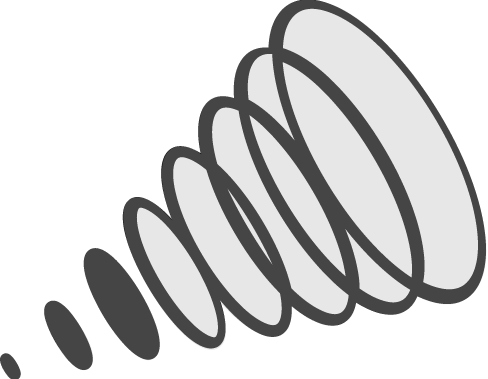Trust instrument
The trust instrument is the document that formally sets up the trust and which clearly creates a separation between the right to control the trust assets and the right to benefit from the trust assets. The trust instrument can take the form of a trust deed which is used to form a living or inter vivos trust during the trust founder’s lifetime. Where a testator sets up a testamentary trust, his Will is used to set up the trust and is therefore the trust instrument. The trust instrument, whether a trust deed or Will, must set out the aims and objectives of the trust and must clearly name the beneficiaries. Further, it must set out the rights and obligations of the trustees, and the rules regarding the distribution of income and capital.
Trust assets
In general, assets can be transferred into a trust by sale (in the form of a loan granted to the trust), or donation on the trust founder’s death in respective of testamentary trusts. What is important is that the trust founder clearly relinquishes control of the assets in his personal capacity and transfers the assets to the trust. Where assets are loaned or sold to a trust, this must be supported by a loan or sale agreement to ensure that SARS does not regard the transaction as a donation. Trust assets can include immoveable property, moveable property, investments, funds or a contingent interest in property.
Trust founder
The trust founder, also referred to as the donor or settlor, is the person setting up the trust. He must demonstrate a clear intention to set up a trust for the purposes of transferring assets or funds into the trust. The trust founder will either set up the trust through his Will (mortis causa) or through a trust deed.
Trustees
The trustees to a trust are appointed by the trust founder in the trust instrument and have a fiduciary responsibility to act in the best interests of the trust beneficiaries. The trust founder can appoint as many trustees as he likes although, from a practical perspective, three trustees is a more manageable number. The role of trustee is onerous in nature and, as such, it is important that the trustees have the appropriate financial acumen to manage the trust assets. Ideally, one of the trustees should be an independent person who has experience in managing trusts.
Trust beneficiaries
When setting up the trust, the trust founder must specifically name the beneficiaries to the trust in the trust instrument. Any person can be named a beneficiary to a trust and there is no limit to the number of beneficiaries the founder can appoint, keeping in mind that a beneficiary can also be a trustee of the trust. Trust beneficiaries can either be income beneficiaries in that they receive an income derived from the trust assets, or capital beneficiaries where they benefit from a portion or the whole of the capital assets, or a combination of both.
Testamentary trust
As mentioned above, a testator can set up a testamentary trust using his Will as the trust instrument. In doing so, his Will must contain the aims and objectives of the testamentary trust, and must name the intended beneficiaries of the trust, such as his minor children. Generally speaking, testamentary trusts are used for the protection of assets intended for minor children who are too young to legally inherit. They can also be used to protect assets intended for physically or mentally impaired beneficiaries, or for a surviving spouse who is incapable of managing his/her own affairs. In a testamentary trust, the testator bequeaths assets to the trust which is only formed upon his death.
Inter vivos trust
An inter vivos trust is one that is set up during the trust founder’s lifetime and, as such, the trust instrument is the trust deed. The trust deed sets out the framework in which the trust must operate, the aims and objectives of the trust, the beneficiaries, trustees, together with their duties, powers and responsibilities. An inter vivos trust, or living trust, can be founded to achieve a number of objectives depending on the intention of the trust founder. For instance, a trust founder may want to protect assets for the benefit of future generations, such as a holiday home or a family farm. In an inter vivos trust, the trust assets are moved into the trust either by sale or donation, but it must be clear that the trust founder intends to relinquish full control of the assets.
Bewind trust
Bewind trusts are also set up during the trust founder’s lifetime using a trust deed and are generally created for trading or business purposes. Bewind trusts provide trustees with limited liability together with certain tax benefits and can be used effectively in appropriate circumstances. Generally speaking, the assets in a bewind trust vest in the beneficiaries, while the trustees control the trust assets for the benefit of the trustees until the assets are transferred to the beneficiaries.
Family trust
A family trust is generally set up as a living trust to house and protect assets for the benefit of family members across multiple generations. As such, the trustees of family trusts are family members, as are the beneficiaries. It is now a requirement that family trusts include one independent trustee to ensure that no conflicts of interest occur.
Vesting versus discretionary trusts
Depending on the intention of the trust funder, a trust can be set up as either a vesting or a discretionary trust. In a vesting trust, the benefits of the beneficiaries are clearly set up in terms of the trust deed. On the other hand, in a discretionary trust, the trustees are given discretion to make certain decisions regarding the amount and timing of distributions paid to beneficiaries.
Special trusts
Special trusts are those which are created for people with special needs, for example individuals with serious mental or physical disability and who are unable to provide for themselves financially. This type of trust referred to by SARS as a Special Trust Type A. Special trusts can also be used to house assets bequeathed to minor children or beneficiaries in terms of one’s Will, and this is known as a Special Trust Type B.
Business or trading trust
Business trusts are inter vivos trusts set up to conduct business and generate profits. Such an entity can provide certain protections and advantages that other business entities do not, although it is imperative that the trust is set up correctly. In such a structure, the trustees use the assets of the trust to carry on their business and create profit for the benefit of the trust’s beneficiaries. The assets held in a business trust are protected from one’s creditors, and such this type of trust can be more cost-effective to administer than other business entities.
Sham or alter ego trusts
The mere existence of a trust does not necessarily mean that those assets are protected. If the intention of the trust founder is not considered genuine, the courts may label a trust a ‘sham’ trust meaning that it is effectively a smokescreen created by the trust founder. On the other hand, if the trustee cannot demonstrate that he relinquished control of the trust assets to the trustees, the trust could be deemed an ‘alter ego’ trust where the founder treats the trust property as his own and where the trustees are merely puppets.
Have a wonderful day.
Sue








